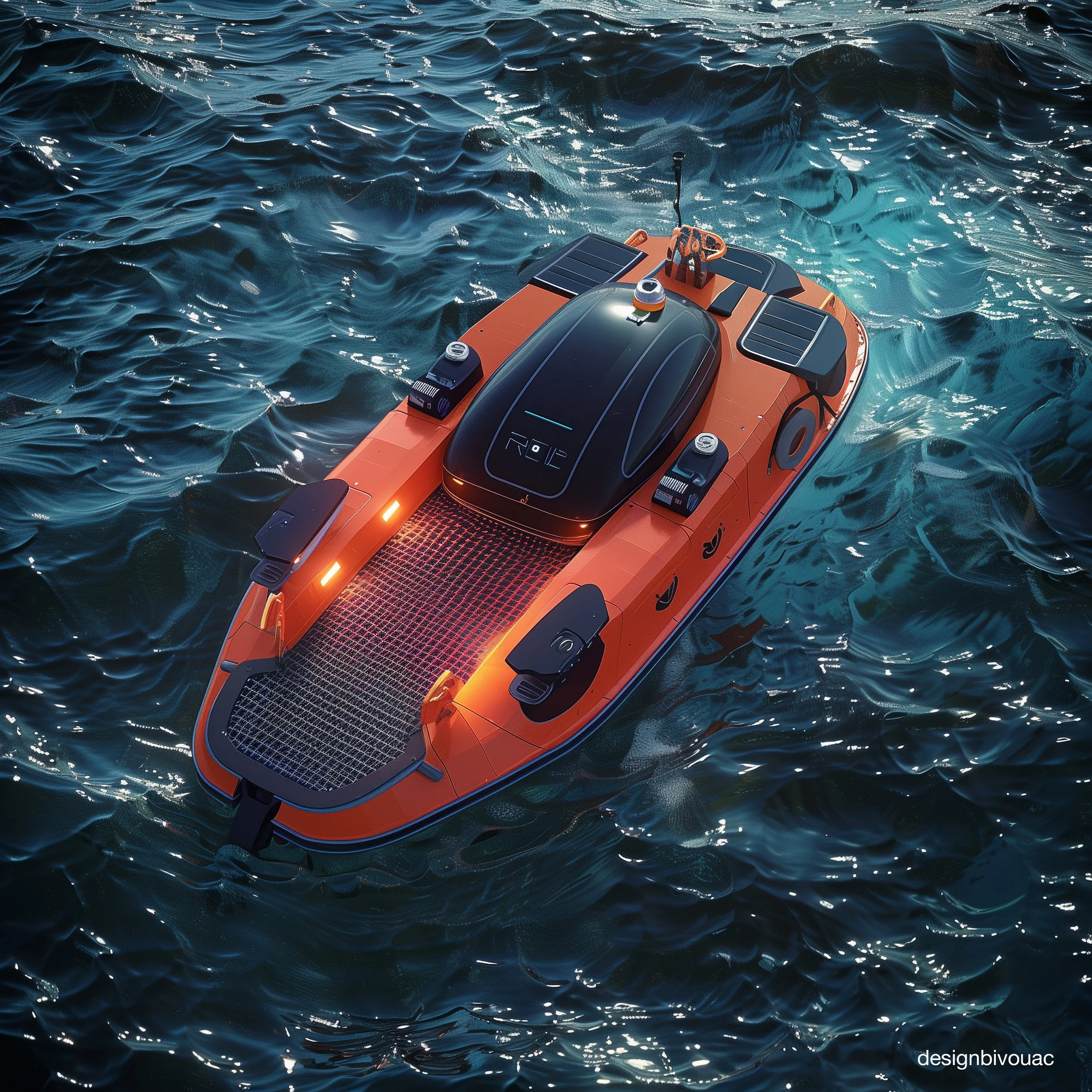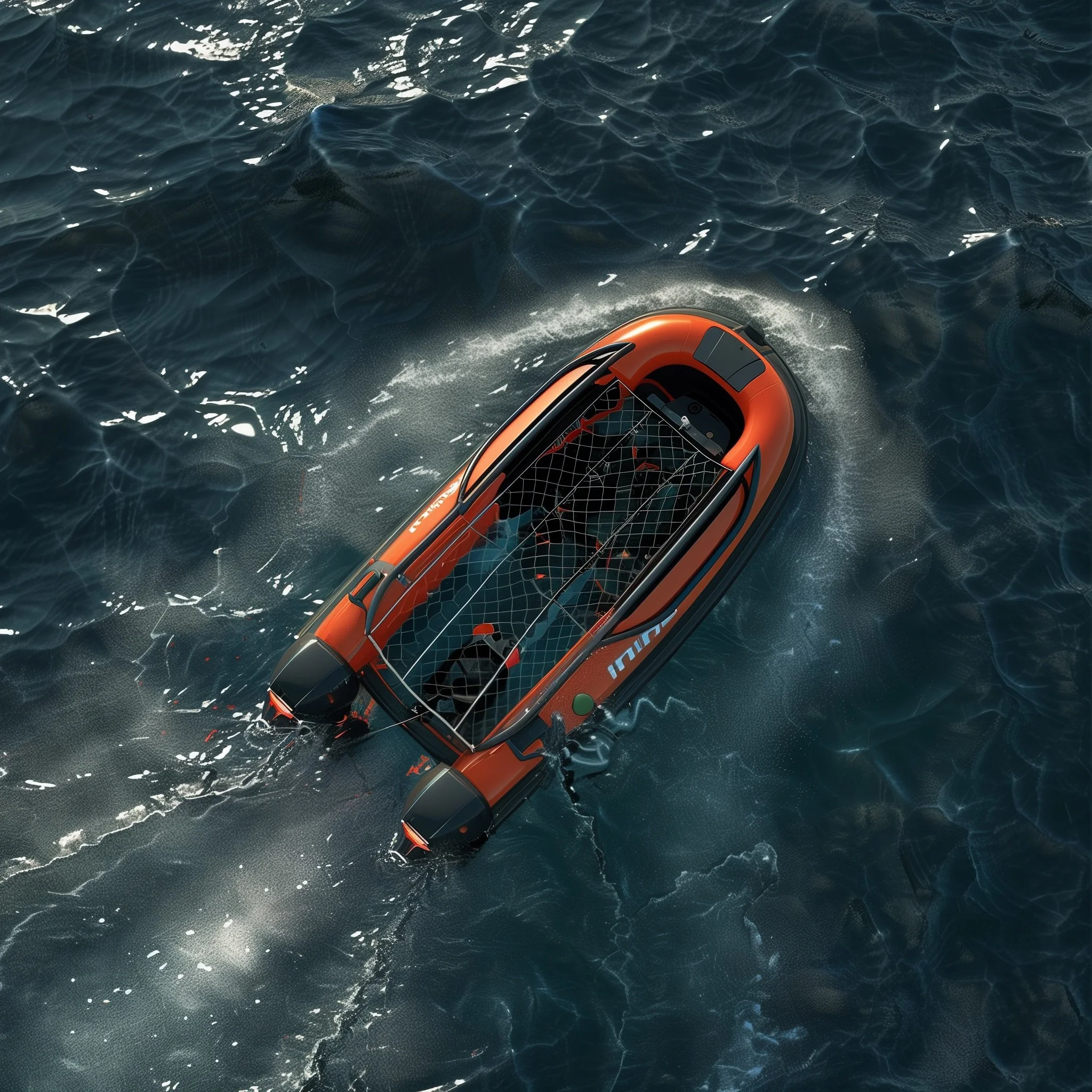Futureproof: Autonomous Water Rescue Craft
Future Narrative
We finally received the first of five autonomous water rescue craft last month. Since then, three people have been saved from rip tides. These craft use an array of sensors to locate swimmers in distress. Once identified, the craft approach and the two vertical motors up front dip the hinged netted rescue area below swimmers. Swimmers are gently lifted above the water and settle securely on the safety netting for transport back to shore. Affectionately referred to as “Swoop and Scoops,” these craft now provide an ever-present additional safety response along our shoreline.
Some municipalities use autonomous water rescue rafts in concert with larger craft when more than one swimmer is distressed. These smaller craft, designed with a partial submersion front motor, are typically deployed in smoother bodies of water or beyond wave breaks. They can also help patrol larger public beach areas more efficiently.
Technology
Sensors and Detection Systems: Autonomous aquatic rescue vehicles integrate with various sensors, such as sonar, cameras, and thermal imaging technology. These sensors enable the vessel to detect and locate distressed individuals, even in low-visibility conditions.
Communication Capabilities: These waterborne vehicles' communication systems allow them to extend radio coverage and establish a connection with rescue teams or individuals in need of assistance. They can relay vital information, provide reassurance, and coordinate rescue efforts seamlessly.
Payload and Rescue Mechanisms: Autonomous aquatic rescue vehicles carry essential supplies such as life preservers, first aid kits, and automated defibrillators. They can deliver these to distressed ships close to shore. Some have built-in mechanisms for towing or lifting individuals out of the water.
Efficiency and Speed: These rescue vehicles significantly reduce response times by leveraging sensor and autonomous technology to pre-position in areas presenting the most risk to swimmers or boaters on any given day. They operate swiftly and precisely, enhancing the chances of successful rescue missions.
Adaptability and Versatility: These rescue watercraft are customized for various scenarios, from rescuing individuals stranded at sea to aiding in swift water or flood rescue operations. Their adaptability makes them valuable assets in diverse water-related emergencies.
Implications
These water rescue vehicles have advanced autonomous navigation systems that enable them to operate independently in water environments. They can navigate complex waterways, identify obstacles, and reach victims quickly and efficiently. Their vigilance never wanes.
They are constantly deployed and on patrol, reducing the time needed to respond to water rescue events.
Overall, autonomous aquatic rescue vehicle technology represents a game-changing innovation in enhancing water safety and emergency response capabilities.
Futureproof is a series of occasional provocations illustrating possible future paths for technology and culture. Think postcards from the future.


